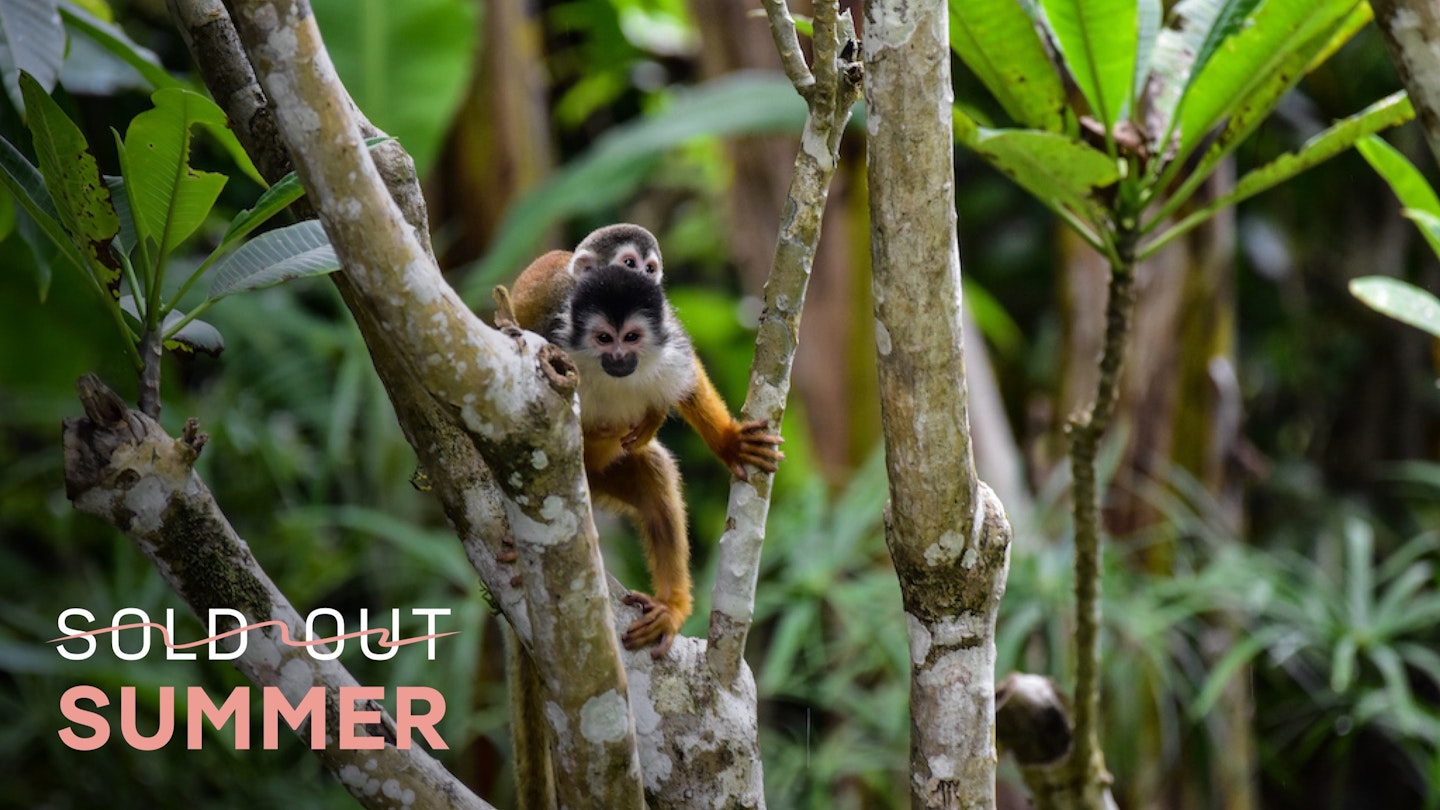Discover Wildlife in Corcovado National Park, Costa Rica
The start of a great adventure often begins where the road ends. What’s unique about Costa Rica’s Osa Peninsula is that the road to the end runs parallel to unimaginable wild wonders.
Iridescent blue morpho butterflies weave through the thick undergrowth, gregarious scarlet macaws chitchat in the electric green canopy, and thousands of eyes peer at you without you noticing. Jaguarundis, anteaters, agoutis, and lizards that walk on water call this vibrant region home.
Life abounds on top of life along the rainforest-lined road. In fact, 2.5 percent of the planet’s biodiversity lives here – inside and around Costa Rica’s treasured Corcovado National Park. For natural explorers, it’s the perfect alternative to more bustling regions of the country like Arenal and Manuel Antonio National Park in the summer.
World-class Wildlife Watching
Corcovado is home to a staggering 370 species of birds, 140 species of mammals, and thousands of insect species, with more still waiting to be discovered. It’s one of the few national parks in Costa Rica that houses all four of the country’s primate species. Spider monkeys, mantled howlers (the second loudest animal in the world), and white-faced capuchins can be encountered anywhere, while the La Leona-Sirena trail is best for observing the fourth and most endangered species—the Central American squirrel monkey.
If you take a walk on the wild side here, you will encounter far more animals than humans. The park’s demanding, multi-day hiking trails attract devoted visitors who set out from Bahía Drake and Puerto Jiménez to see the wildlife and experience a genuine jungle adventure. Although the hiking is hot and humid, the challenge of the trek and the interaction with wildlife are thrilling.
Puerto Jiménez: Gateway to the Park
The quaint, colorful town of Puerto Jiménez is an excellent jumping-off point, with everything you need to enjoy an adventure-packed stay on the Osa Peninsula. A little more than 25 miles from the Corcovado National Park entrance, bus rides take about three hours and cost around $10 USD. Alternatively, direct flights and boat rides can take you to the famed Sirena Ranger Station.
Puerto Jiménez is the last town before entering the wilderness and is where you can find tour operators and the Corcovado National Park office. Since 2014, it has been mandatory to have an accredited guide with you to enter the park. Your guide will ensure you see the most wildlife and learn about the park’s natural history.
While in town, you can gather hiking supplies, sample delicious local fare, and explore other adventures like dolphin and whale watching. A kayaking tour through a mangrove forest during the day or at sunset, when bioluminescent wildlife can be admired from your boat, is particularly popular. South of Jiménez, the surfer haven of Cabo Matapalo and the jungle lodges of Carate beckon travelers in search of nature and solitude.
What to Expect and What to Bring
Hiking into Corcovado National Park via La Leona is no “walk in the park.” This guided hike covers roughly 20 kilometers and typically takes seven to nine hours to complete. If you are prepared for such an enduring trek, though, it will likely be one of the best walks of your life.
Being prepared means bringing enough water (at least two to three liters in reusable bottles), wearing comfortable hiking shoes (waterproof is preferable), dressing in breathable, quick-dry clothing, packing a good lunch and snacks, and applying (and reapplying) sunscreen and insect repellent. Packing a hat, sunglasses, binoculars, a camera, and a swimsuit is also recommended.
Summertime is the rainy season, so a rain jacket and dry bag are essential. However, don’t worry—a little rain won’t put a damper on your hike. The forest canopy is so thick in many parts of the trail that it acts like a natural umbrella, creating a refreshing atmosphere for plants, animals, and visitors alike. It’s the perfect opportunity to disconnect and reconnect in Costa Rica this summer.




